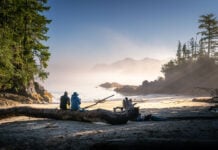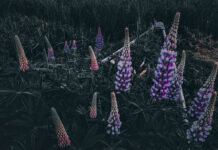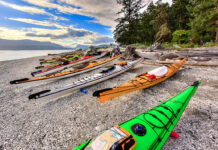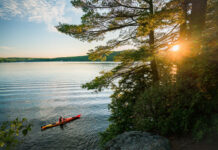What do we do when a storm might be coming through? I ask rhetorically. “Get off the water. Find a strong position and hunker down.”
February 2020
We’re sitting in the operations hub of a Baja sea kayak company. The topic is a group that wants to reschedule their trip because they’re worried about something called coronavirus. It’s easy for me to talk. My trip leaves tomorrow, six days of photography in the Sea of Cortez. The stress of running a kayak business isn’t mine. But it’s etched on the face of my old friend, the owner. Of course, the strong position is to do trips as long as it’s safe, so the outfit and its employees can weather the financial drain in a seasonal business already prone to strong flood and ebb cycles.
The storm, of course, is far bigger than we imagine.
For the next six days, we paddle with leaping dolphins, flocks of pelicans and boobies, and brilliant sunrises. I celebrate my birthday with the best seafood tacos I’ve ever had and a paddle with tropical fish. Then I fly home.
March 2020
Three weeks later, half the world’s 7.8 billion people are under lockdown. The storm’s hitting different places at different times, but it’s rolling in big. While I’m “social distancing,” life is still normal in Baja. Then the same patterns appear. My friend tells me cancellations are rising like the tide on a narrow beach, threatening to swamp everything. Some visitors make the last flight out. Two days later, I see videos of the Policia Municipal enforcing the lockdown at the fish taco place, the estuary where I launched, and the beach where we surfed amidst diving pelicans.
The storm is a hurricane
As the news builds, lockdowns strengthen and boat ramps close, I limit my paddling to short exercise paddles, reading a book on an island in the middle of the river. I know I could find water access, avoid other people until I’m afloat, and feel the water under my hull. But driving around with a boat on my car sends the wrong message about essential trips. So, I kill time with charts of Haida Gwaii, making plans for… someday.
Sea kayakers who paddle challenging waters always manage uncertain risks. We go where information is sketchy. Baja has no VHF forecasts; my haunts on the British Columbia coast have no current tables. Rounding an exposed headland requires anticipating what might happen somewhere else hours later when the tide changes and the wind shifts. Mistakes put you and your co-paddlers at risk. Welcome to the pandemic era. We’re all expedition paddlers now.
The grocery store becomes an exposed crossing. We hedge our bets: go early before the wind rises, paddle quickly to limit exposure, go when crowds are smaller, get in and get out, wash our hands. Or skip the crossing and have groceries delivered—the lockdown equivalent of hiring a water taxi to take you somewhere you’d rather not paddle.
Expedition behavior applies: Commit to shared goals. Take care of yourself so you can help the group. Help others but don’t do their job for them. Minimize unnecessary risks. Conserve energy. Be calm. But now my group is a city of 2.2 million, not a few trusted friends.
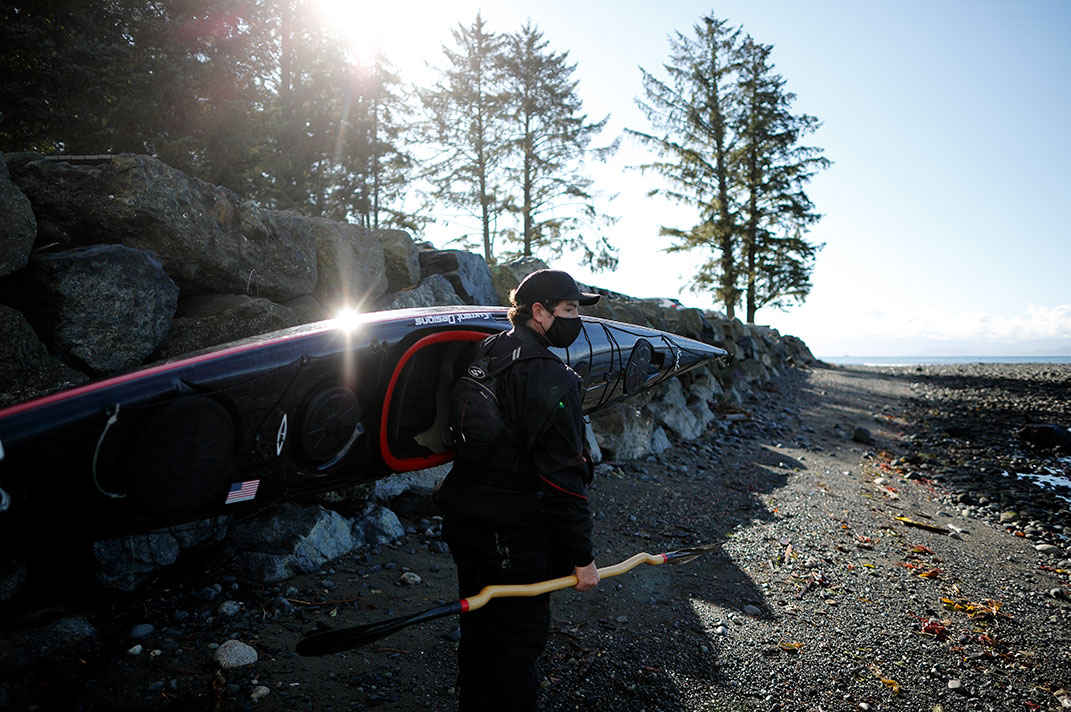
June 2020
A wave fills my cockpit with cold seawater before I can seal my skirt. It’s my first beach launch in months, and I timed it poorly. The virus is clearly here for a while. Lockdowns are easing, not due to vaccines but human nature—we just can’t stay inside anymore. My paddling range has extended to camping on uninhabited islands, small groups, no shuttles, avoiding crowded put-ins. No meals and beer afterward. A friend who’s watched too many spy thrillers calls it Moscow Rules Kayaking: lay low, watch for opportunities, then move decisively. But we’re going rock gardening, not sneaking over the Berlin Wall.
August 2020
The lady from the next campsite asks where to put the garbage she kindly cleaned up after some jerk left an ugly trash pile. But there’s nowhere to put it. The overflowing dumpsters have been taken away. The bathrooms are BYO toilet paper. In a summer without little league or concerts, kayaks on cars are everywhere. The outdoors is swamped. And it’s getting, well, trashed.
Now we launch early in the morning when few people are around. But coming off the water later means navigating seas of people, many maskless, who flock to the water. Many friends bail for fear of outdoor-starved mobs at the take-out. The calculus between exposure risk and the benefits of fresh air, exercise and camaraderie are still a known unknown. It’s Yogi Berra paddling: “Nobody goes there anymore because it’s too crowded.”
Having spent my career encouraging people to love and protect nature, this new enthusiasm is great but overwhelming. A park manager says they’ve gone from emptying garbage cans once a week to four times a day. The pandemic’s economic hit has pummeled agency funding, so fewer staff now manage more visitors. This could create a groundswell of demand for more campgrounds, trails and parks. But it may come with agency budgets bleeding red ink. This double whammy is like a tough rock-garden rescue: the need is greatest when it’s most risky for the rescuer.
October 2020
A cold wind whips sea fog from the south. In Rosario Strait, I hear foghorns from ferries or tankers. I grimace and turn around: no crossing this afternoon. The end of my solo trip through the San Juans will be a day later. I’m pushing season’s end hard, and I know why: I dread the rainy, dark winter that’s knocking. With virus cases up and the mercury down, it will be winter without warm gatherings with friends. The annual rough water symposium has been canceled.
I’m pushing season’s end hard, and I know why: I dread the rainy, dark winter that’s knocking.
To brace for a five-month “weather day,” hunkered down with the news instead of the VHF, I make lists of quasi-paddling projects. Relearn knots, revive stalled photo projects, organize the gear room. Sure, there will be some rainy, cold paddles, too.
By the time you read this in spring, the storm will have eased. And that’s another thing we all learned from sea kayaking: the weather is king, and plans are always subject to change. The Haida Gwaii charts will come back out, and I’ll plan a trip for… someday.
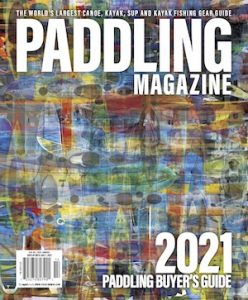
Neil Schulman paddles and writes from Portland, Oregon.
Welcome to the pandemic era. We’re all solo expedition paddlers now. | Photo: Kevin Light



